Corruption in Russia is certainly more pronounced and pervasive in its measurable forms than in the West. Bribery, extortion and theft are corrosive to the state and society at large, but importing the contemporary pathologies regnant in America and Europe is positively lethal. The alleged “transparency” of liberalism masks spiritual corruption- the inversion of virtue itself and cultural disintegration. Russians must already confront the murderous legacy of Marxism-Leninism, a vacuum filled today by anything from drug addictions to electronic entertainment and consumer distractions. To forge a path to resurgence, the new iterations of atheist materialism must be combated and vanquished rather than welcomed.
The role of Vladimir Putin in restoring Russia must therefore be examined more closely. In a number of cases, the current prime minister has vigorously prosecuted the interests of his nation; curbing the power of Open-Society tycoon Mikhail Khodorkovsky and standing up to Washington in the post-Soviet space are examples that come immediately to mind. Yet it is not clear that Putin has any overarching conservative vision for Russia. Indeed, his entire power “tandem” with Medvedev attests to absorption with tactics and expediency at best. Thus intelligent and fearless criticism from the right becomes a necessity. The words of nationalist and academic Andrei Saveliev carry special resonance in this regard. In this two-part interview with Alternative Right, Saveliev provides us an insider’s look at Russian politics and elaborates his tough and principled opposition to the liberal oligarchy.
***
Andrei Saveliev has a PhD in Political Science from Moscow State University. He was an elected deputy of the Fourth State Duma on the "Rodina" ticket (2003-7) and the right-hand man of Rodina's leader, Dmitry Rogozin. He is chairman of the unregistered political party Velikaya Rossiya (Great Russia). He is the author of over 300 articles and several books, including Political Mythology (2003), Nation and State: A Theory of Conservative Reconstruction (2005), The Image of the Enemy: Racial Studies and Political Anthropology (2007). He currently teaches courses on the Sociology Faculty at Moscow State University.
Alfred Smith is the alter ego of a graduate student somewhere in the UK. He was happy to conduct this interview and skilled translation for Alternative Right during a recent trip to Moscow. Some of his writings can be found at The Devil's Review.
Many conservatives in the West have a favourable opinion of Vladimir Putin, seeing him as true national leader who is working in the interest of the Russian people. Many of my colleagues believe him to be a conservative, even a nationalist. However, in your book Nation and State: A Theory of Conservative Reconstruction, you write that Putin is actually a liberal. How is Putin a liberal?
I was very surprised when I met with some Italian conservatives, they gave me a publication in which Putin was extolled as a great world leader, as some sort of model of a nationally oriented head of state. Their confusion had to do with the lack of information about the real situation in Russia, and the misinterpretation of certain rude words spoken by Putin, which were taken as ‘anti-American’ and quoted many times in the Western media. At the time I wrote a short explanation and sent it to the Italians.
Let us remember, for a start, that Athenian democracy made much use of slave labour, ritual prostitution and a monopoly on maritime trade, which more close resembled piracy. In ‘totalitarian’ Sparta the number of hangers-on (the city demos) was much smaller, while the relationship between the Spartans and the helots was more reminiscent of the relationship between landowner and tenant. Besides, even in Athens it was not permitted to kill a slave arbitrarily. In one of the dialogues of Socrates, his interlocutor tells how the murderer of a slave was bound and thrown into a ditch before being taken into custody.
Liberal ideas appeared and began to manifest themselves in the life of the world in the context of the slave trade and the drug trade (the Opium Wars, for example). And now formal democracy rests on various forms of slavery (including sexual), unprecedented levels of drug addiction world-wide, various forms of theft, and speculation on commodities and financial instruments, which destroys industry and agriculture through debt bondage.
As far as contemporary Russia is concerned, I judge by the results, by the way of thinking and the actions of Putin. His aims are exclusively liberal. And the results of his governance have been deplorable for the country. The crisis which Russia fell into in 2008 is still deeper than the one in the Yeltsin period, and Putin’s policies are largely to blame for this. The main cause of this crisis is the legalization of the capital obtained by the oligarchs. This was possible only under an ultra-liberal government. What this means is the pardon of enormous crimes concerning the seizure and transfer of property in previous years, during Yeltsin’s presidency. Under Yeltsin they managed to make about ten billionaires right with the law, under Putin, about a hundred.
Liberalism has various definitions. The main mark of contemporary liberalism is not the demand for freedom of enterprise, but the globalisation of the economy and the de facto liquidation of national sovereignty. Free elections and parliamentary debates are only the façade of the political system. In Russia this façade looks filthy and absurd, but the basic blueprint, accepted in the West, has been preserved. There are no real elections, no real debates. But there are semblances of them. More important is what is behind the façade. What’s behind it is the absolute power of the oligarchy and a corrupt bureaucracy, which is ripping the country to pieces.
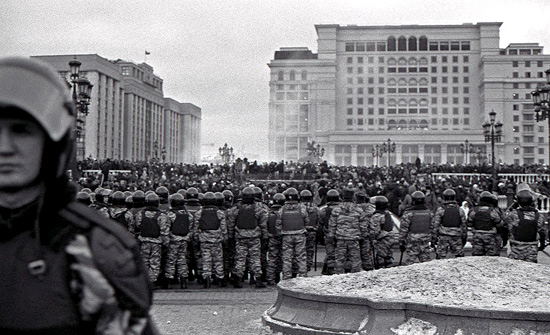
Putin is representative of those power groups who have transformed the Russian economy into a part of the global economy, who have changed the economy such that it no longer serves the national interest. The oligarchic order which has developed in Russia was created by the experience and the pressures of the global economy, which is promoted by unaccountable people who have no fatherland. This is not small or medium sized business – this is big business, global business which has penetrated into other countries and integrated itself with similar global businesses: Gazprom, Lukoil, Rosneft etc. These are the main fuel and energy corporations. But that’s only the beginning of what they do. They have become involved in other arenas, including politics. Their interests are in no way connected to Russia’s national interests. The interest these corporations have in Russia is to use the energy resources of the country in such a way that the Russian people will not gain any benefit from them.
The second aspect of liberalism which is relevant to our country is the formation of a liberal (that is, free from any and all responsibility) bureaucracy. This bureaucracy has basically become its own social class. It’s not only civil servants, it’s a class formed by familial ties and ethnic solidarity which is opposed to the ethnic Russian majority. This is something else we can thank Putin for. And for the ‘iron law of oligarchy’ which in this case met with no resistance from our government: any democratic system degenerates into oligarchy. In this case we see the highest officials included in the oligarchy and the formation of civil service that acts as a mechanism for the suppression of civic consciousness. Liberalism in this environment is an ideology meant to keep citizens on a short leash. It has replaced the communist ideology, employing the same form of rhetoric, and differing only in its terminology. In the Putin bureaucracy we see not fidelity to law and national interests, but the conviction that one has the right to be arbitrary and flout the law.
Putin in this matter is a perfect model: he ignores the law both as an administrator (constitutional norms are unknown to him, and of no interest), and as a politician, constantly showing off before the whole country. The sanctions of law that are supposed to be common to all do not apply to him. He is like a driver who gets away with breaking all the traffic rules. His cynical flouting of the law is censured only by independent online journalists. Putin provides the model for all the local bureaucrats. Behind the façade of formal obedience to the law they conceal their complete contempt for law. This is their understanding of freedom: freedom to be independent of the law. But with the option of forcing citizens to follow the most absurd and illegal rules.
The liberal bureaucracy has transformed Russia into an open hunting zone, a wild west, where a few are allowed to hunt, and the rest to either observe or become the prey. All the rest must live strictly in accordance with the law and go to the bureaucrat to ask his permission for anything they wish to do. The bureaucrat, for his part, may act in accordance with the law, or may not act at all. And this pernicious inaction on the part of the bureaucrat is his main tool of manipulation and taking bribes.
Yet another aspect of the liberalization of Russia under Putin is the mass media, where the level of pornography has exceeded all bounds, while the reliability and completeness of information has ceased to be a priority. State television promotes freedom from restraint, free love, homosexuality, prostitution, slovenliness, ignorance and cynicism. And all of this is under the auspices of the government, which demands only complete loyalty to the regime. In the rest of the media, the most depraved and dissolute people are allowed to run things.
Putin has not carried out a single project, though he had at his disposal such a colossal sum of money as no ruler in the world ever had. It all went into the pockets of the oligarchs. And now that the oil prices have gone south, it turns out that the electronic credits Russia received as payment for oil and gas are worthless. Now we lack the resources to provide for a more or less decent standard of living for the vast majority of the population, let alone for modernization.
Putin has committed a series of criminal acts to kow-tow to the liberal world community. He has handed over the lion’s share of Russian firms to foreign capital and the deracinated oligarchy, ceded vast territories to China, abandoned the Northern Caucasus (especially Chechnya) to criminality, and destroyed close relations with Ukraine and Belarus using ‘gas blackmail’. The harsh grimaces of this actor should not deceive us. It is no more than an act.



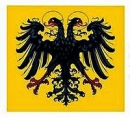

 del.icio.us
del.icio.us
 Digg
Digg.jpg)

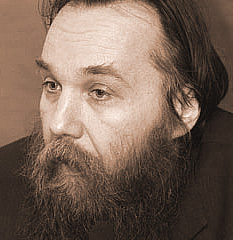
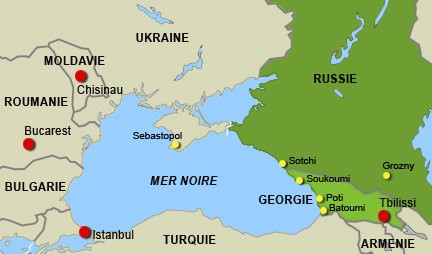


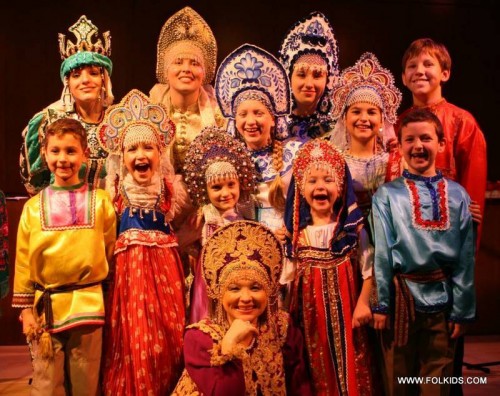
 Fresh out of stories praising the brave freedom fighters who overthrew the warlord who kept Egypt out of truly pointless and destructive wars, the mainstream media is now feasting on the comically lugubrious and sordid details of the gang-rape of anchor Lara Logan.
Fresh out of stories praising the brave freedom fighters who overthrew the warlord who kept Egypt out of truly pointless and destructive wars, the mainstream media is now feasting on the comically lugubrious and sordid details of the gang-rape of anchor Lara Logan.
 The January 24th terrorist bombing at
The January 24th terrorist bombing at  Cette vision a été élaborée en utilisant une méthodologie fondée sur de nombreux emprunts aux enseignements de Marcel Merle (1), à la méthode prospective d'Hugues de Jouvenel et à l'œuvre d'Edgar Morin avec lesquels j'ai eu la chance de partager des réflexions dans le cadre de Futuribles et de la Fondation pour les études de défense à l'époque où elle était présidée par le général Buis.
Cette vision a été élaborée en utilisant une méthodologie fondée sur de nombreux emprunts aux enseignements de Marcel Merle (1), à la méthode prospective d'Hugues de Jouvenel et à l'œuvre d'Edgar Morin avec lesquels j'ai eu la chance de partager des réflexions dans le cadre de Futuribles et de la Fondation pour les études de défense à l'époque où elle était présidée par le général Buis. 


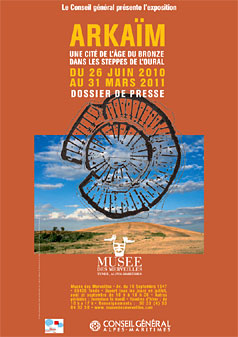


 Dans le cadre de la Contrée de cités, les cités fortifiées se situent à une distance comprise entre 40 et 60 km les unes des autres. Le lieu de construction choisi se révèle toujours sec et plat, surélevé de quelques mètres au-dessus du niveau de l'eau, et délimité sur ses côtés par des fleuves et des pentes naturels. Grâce à des recherches archéologiques récentes et à l'observation de photographies aériennes, il a été possible de reconnaître la succession précise des divers systèmes d'aménagements : les structures de forme ovale sont les plus anciennes, remplacées plus tardivement par des structures en forme de cercle ; enfin, les systèmes de fortification rectangulaires sont les plus récents.
Dans le cadre de la Contrée de cités, les cités fortifiées se situent à une distance comprise entre 40 et 60 km les unes des autres. Le lieu de construction choisi se révèle toujours sec et plat, surélevé de quelques mètres au-dessus du niveau de l'eau, et délimité sur ses côtés par des fleuves et des pentes naturels. Grâce à des recherches archéologiques récentes et à l'observation de photographies aériennes, il a été possible de reconnaître la succession précise des divers systèmes d'aménagements : les structures de forme ovale sont les plus anciennes, remplacées plus tardivement par des structures en forme de cercle ; enfin, les systèmes de fortification rectangulaires sont les plus récents. de la Contrée de cités possèdent deux fonctions bien distinctes : utilitaire et sémantique. La poterie, par exemple, est ornée de motifs géométriques qui symbolisent les différentes forces de la nature - cercles, carrés, losanges, triangles, croix gammées - qui se retrouvent également dans l'aspect général des colonies et des constructions tombales. D'autres objets sont également décorés : il s'agit de petites sculptures anthropomorphes et zoomorphes en pierre, de pilons, de coupes en pierre ou de manches d'armes et d'outils.
de la Contrée de cités possèdent deux fonctions bien distinctes : utilitaire et sémantique. La poterie, par exemple, est ornée de motifs géométriques qui symbolisent les différentes forces de la nature - cercles, carrés, losanges, triangles, croix gammées - qui se retrouvent également dans l'aspect général des colonies et des constructions tombales. D'autres objets sont également décorés : il s'agit de petites sculptures anthropomorphes et zoomorphes en pierre, de pilons, de coupes en pierre ou de manches d'armes et d'outils.

 Les communautés de la Contrée de cités se divisaient de manière tripartite en guerriers, prêtres et artisans, comme c'est typiquement le cas au sein des sociétés indo-européennes. On ne peut toutefois reconnaître l'existence d'un pouvoir détenu par un chef de tribu unique : grâce aux études menées sur les rites funéraires et les sépultures, il a été possible de conclure que la société de la Contrée de cités était en fait hiérarchisée et rassemblée autour d'une élite. L'autorité de ce groupe d'individus n'était pas fondée sur des contraintes économiques mais sur des valeurs religieuses traditionnelles. Les membres de l'élite tenaient le rôle de prêtres et disposaient également d'une position importante dans le domaine militaire. La femme possédait un statut social élevé et la part jouée d'une manière générale par les femmes dans la culture de la Contrée de cités était très développée.
Les communautés de la Contrée de cités se divisaient de manière tripartite en guerriers, prêtres et artisans, comme c'est typiquement le cas au sein des sociétés indo-européennes. On ne peut toutefois reconnaître l'existence d'un pouvoir détenu par un chef de tribu unique : grâce aux études menées sur les rites funéraires et les sépultures, il a été possible de conclure que la société de la Contrée de cités était en fait hiérarchisée et rassemblée autour d'une élite. L'autorité de ce groupe d'individus n'était pas fondée sur des contraintes économiques mais sur des valeurs religieuses traditionnelles. Les membres de l'élite tenaient le rôle de prêtres et disposaient également d'une position importante dans le domaine militaire. La femme possédait un statut social élevé et la part jouée d'une manière générale par les femmes dans la culture de la Contrée de cités était très développée.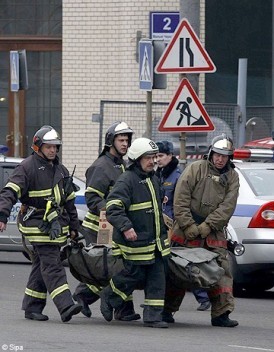 MOSKOU 29/01 (AFP) = De dader van de dodelijke aanslag op de Moskouse luchthaven Domodedovo, waarbij maandag 35 mensen omkwamen, is afkomstig uit de Noordelijke Kaukasus, de onstabiele regio in het zuiden van Rusland. Dat meldt de commissie die instaat voor het onderzoek zaterdag.
MOSKOU 29/01 (AFP) = De dader van de dodelijke aanslag op de Moskouse luchthaven Domodedovo, waarbij maandag 35 mensen omkwamen, is afkomstig uit de Noordelijke Kaukasus, de onstabiele regio in het zuiden van Rusland. Dat meldt de commissie die instaat voor het onderzoek zaterdag.